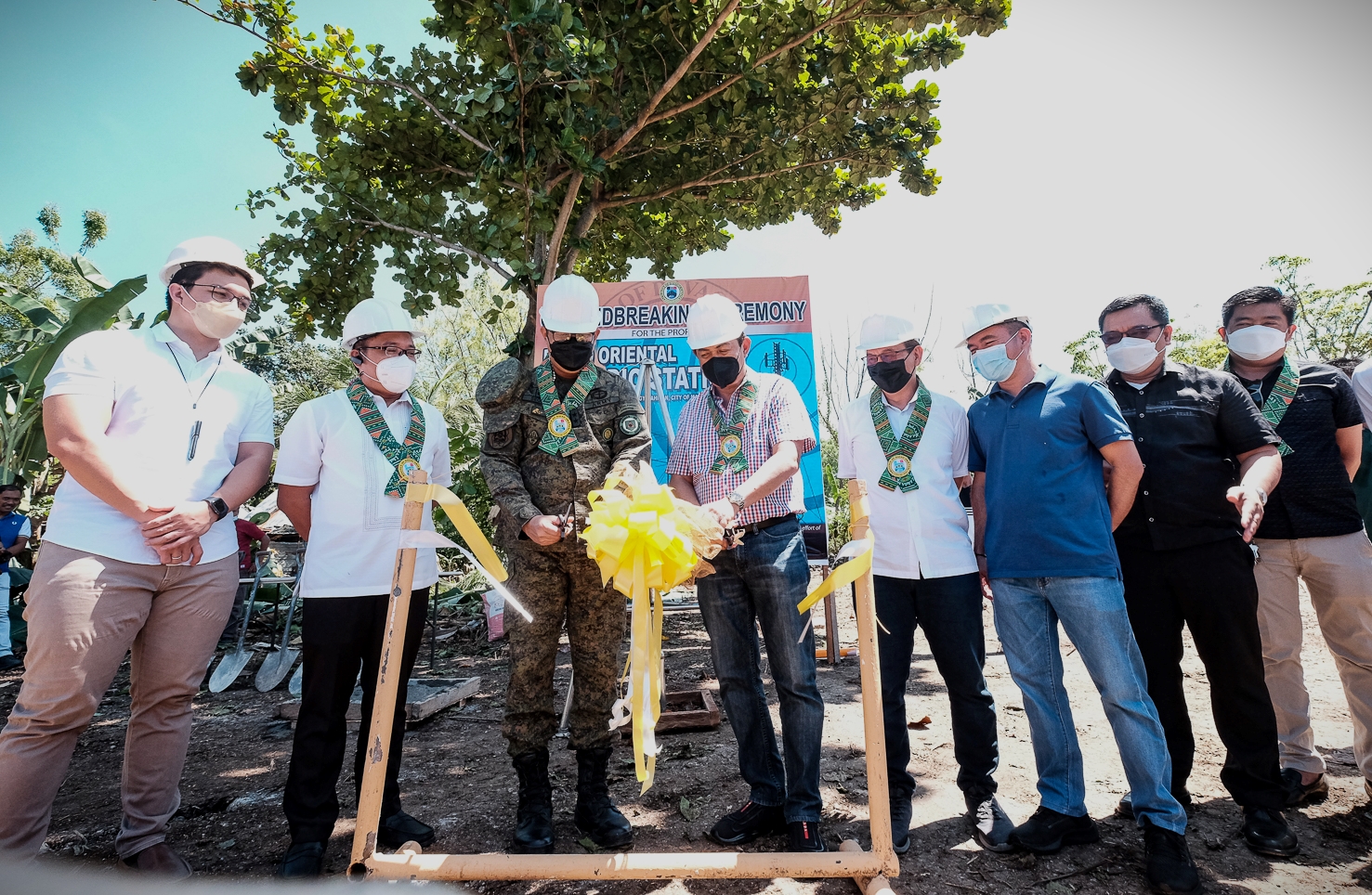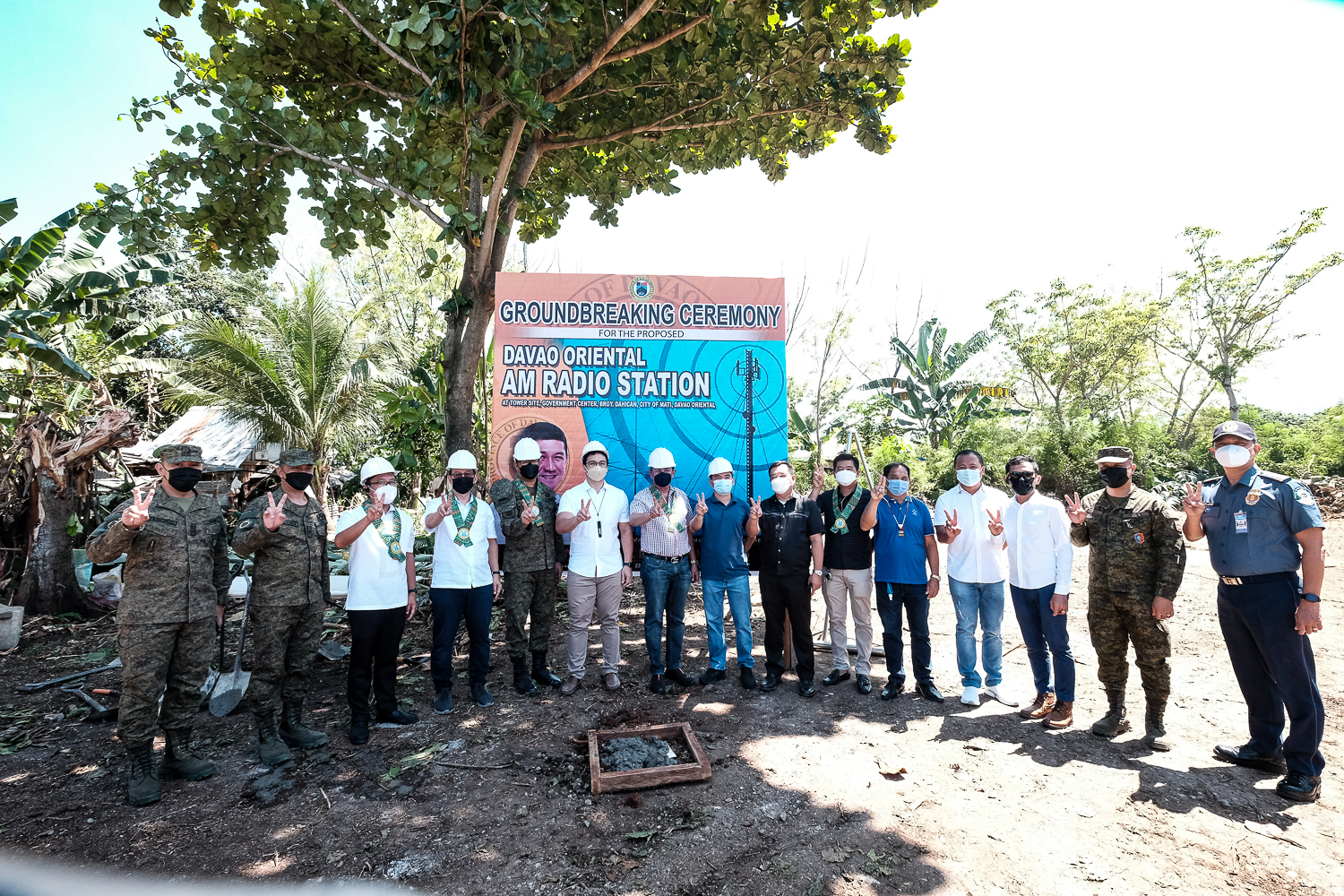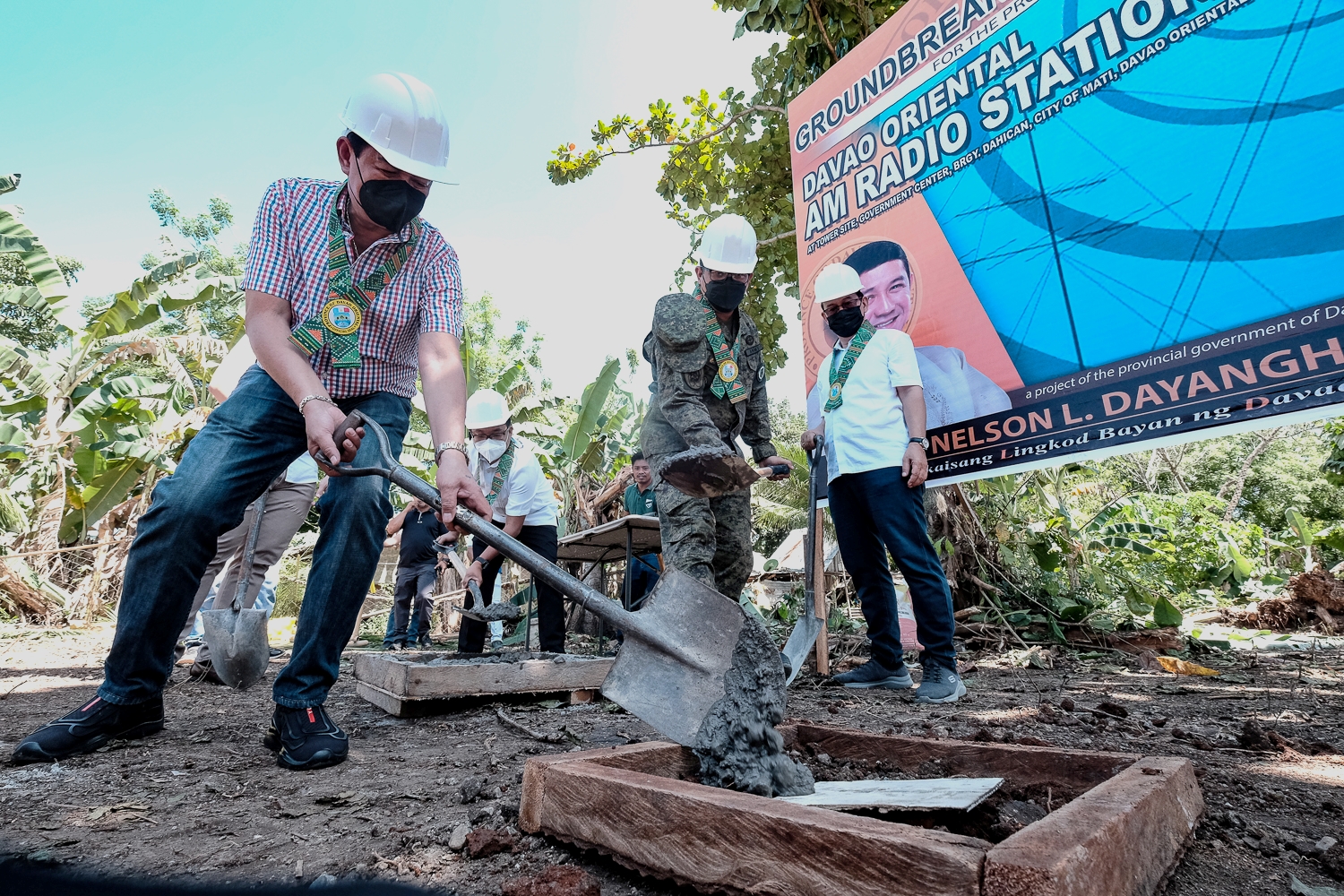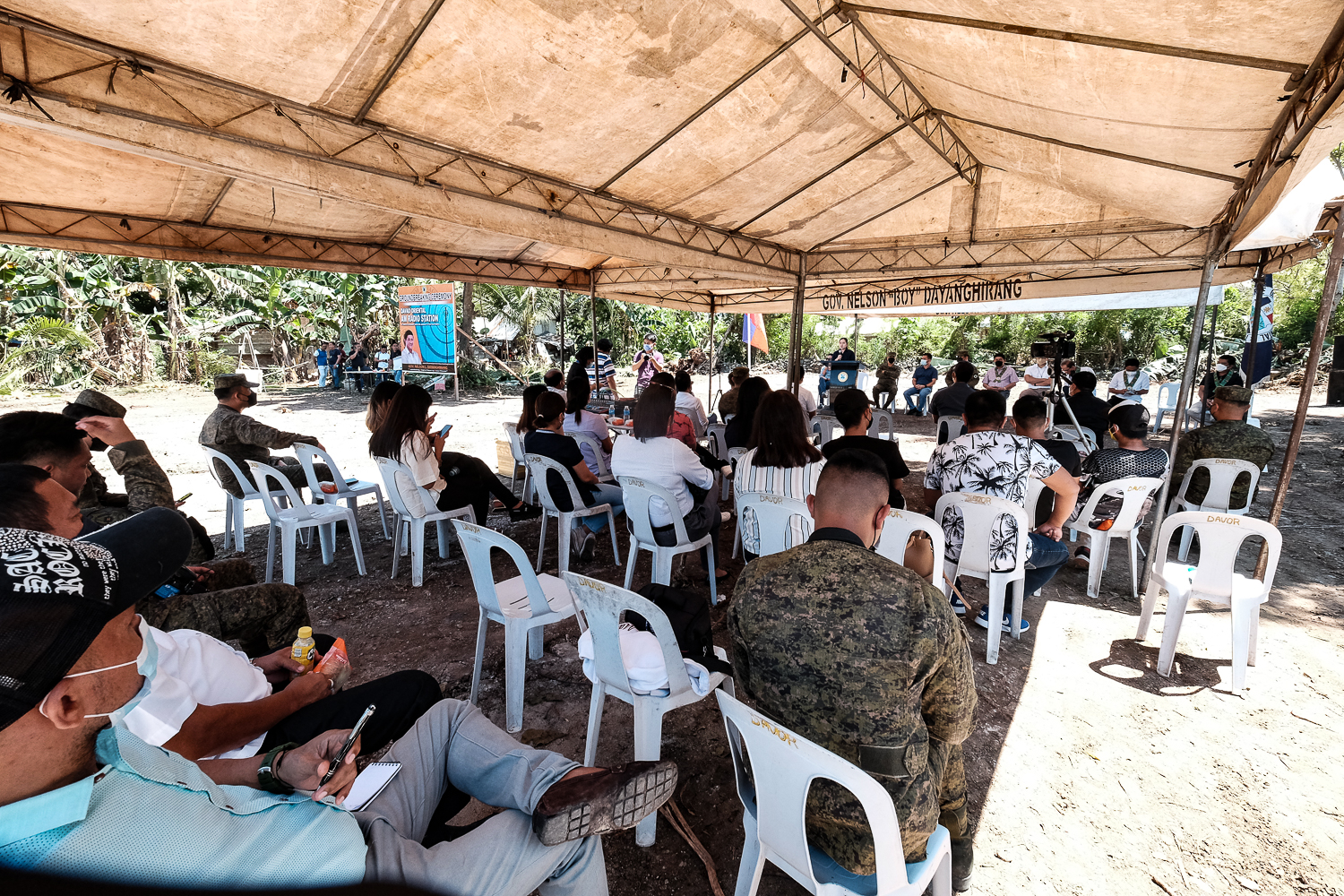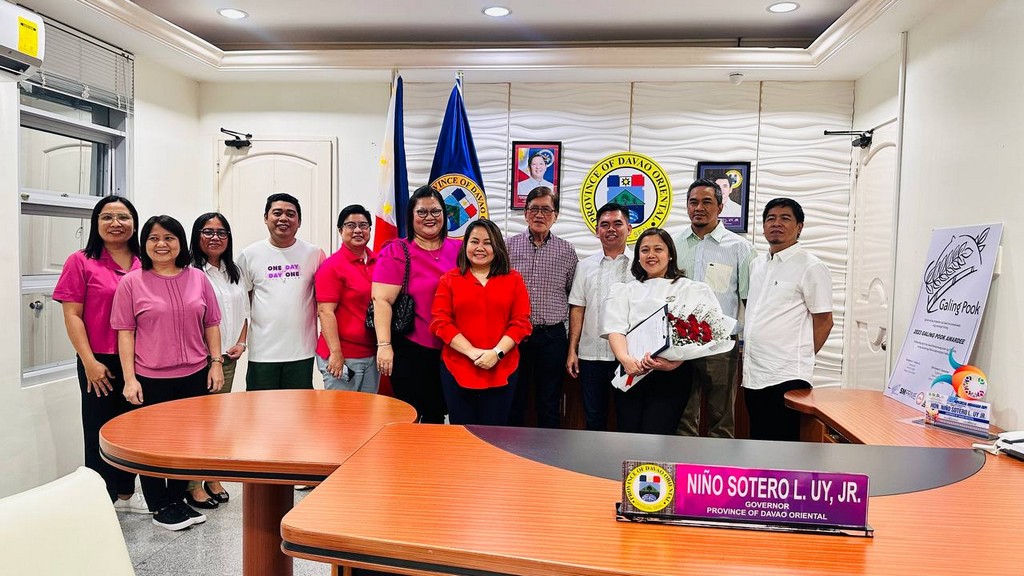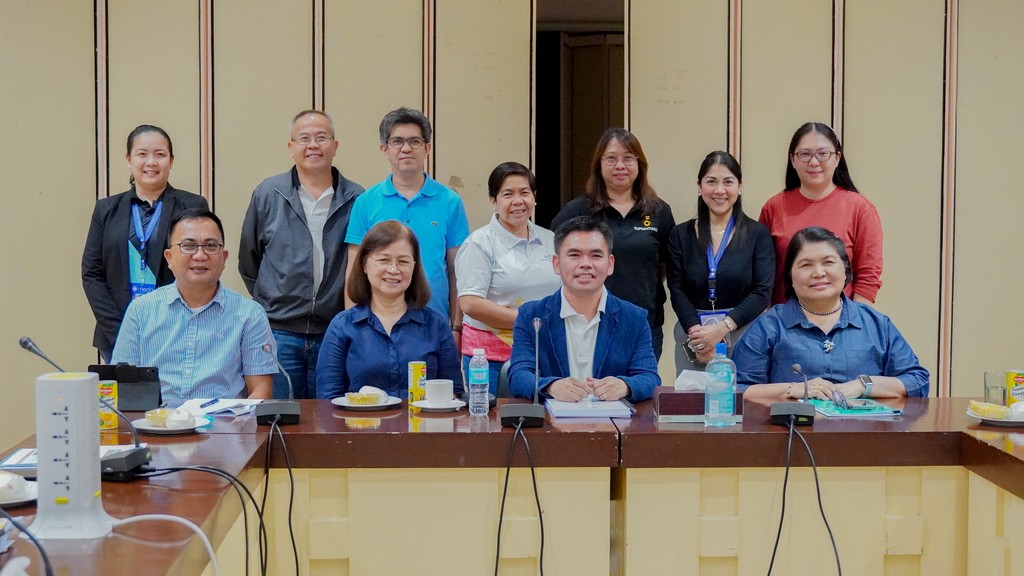After almost 56 years of existence as a local government unit, the provincial government of Davao Oriental is set to build its own first radio station with an AM frequency that would have wider reach even beyond the province, specifically targeting communities called by the government as GIDAs or Geographically Isolated and Disadvantaged Areas which the government describes as “fertile breeding grounds” for the Communist insurgents.
“I did not hesitate to approve this project because I saw its necessity. We really need to amplify all the government programs for the people. And the most effective way of doing it is through radio because of its very wide reach to the grassroots,” says Davao Oriental Governor Nelson Dayanghirang during a groundbreaking ceremony here for the new radio station whose towers will be built at the provincial government-owned property in Barangay Dahican in the City of Mati.
“Lack of information by the people on the wide array of government programs and services is among the reasons of discontent by the people, so they are easy targets by the insurgents who exploit on the people’s discontentment with the government’s inability to communicate all the beautiful programs for the people. Most importantly, this radio station is the most effective tool for the government’s peace advocacy in the grassroots,” says Governor Dayanghirang.
There are at least 15 radio stations in Davao Oriental mostly run by private enterprises. The only radio station in the province with an AM frequency is being run by the local Catholic church.
“We will not compete with the privately owned radio stations in the province although this radio station is also designed to be income-generating. We are building this radio station mainly because we want to amplify all the beautiful programs of the government for the people. Besides, the government will save a lot of funds from this as we no longer have to buy pricey airtime from the private radio stations,” says Karen Lou Deloso, public information officer of the provincial government.
The construction of the first Capitol-run AM radio station in the province will cost the provincial government at least P10 million through a loan proceeds from the Land Bank of the Philippines, says Deloso who was the first to conceptualize on the project.
“This is a step to a right direction. And I thank the outgoing Governor Nelson Dayanghirang for his all-out support for this legacy project. We know the incoming administration of Governor Corazon Malanyaon will support and pursue this project as this is a worthy investment, and a big boost to our good governance efforts, especially on transparency,” says Deloso.
Aside from being a tool for information dissemination and public awareness, the new radio station will also be an effective tool for disaster preparedness and response. “It can provide timely dissemination of weather advisories and early warning especially to vulnerable communities, particularly in areas wherein physical access is difficult… In terms of disaster response, radio broadcast can also be crucial in the initial hours in the aftermath of a disaster as people want to be informed so that they can understand what is happening and assess how they can receive support. It can also help responders to keep local population updated and coordinate and execute evacuation plans,” says Deloso. She adds that the new radio station will lessen the provincial government’s dependence on privately owned media. “Annually, the provincial government spends around four million pesos (for the airtime being bought from the privately owned radio stations) which is more than sixty percent of the total budget of the Provincial Information Office… Although these private media establishments have been partners with the provincial government in reaching out to the general public in terms of information dissemination, relying on them for the promotion of government programs has its limitation since they essentially play as watchdogs,” says Deloso.
The chief of the Civil Relations Service of the Armed Forces of the Philippines, Major General Manuel Sequitin, also graced the groundbreaking ceremony for the new radio station here.
“I am glad to be back here in the province of Davao Oriental, this time to help in the construction of a local government-run radio station. I have lots of good memories here, most especially our successful partnership with the local government, the successful peace and development programs being initiated by Governor Dayanghirang,” says Major General Manuel Sequitin who used to head the 701st Kagitingan Brigade of the Philippine Army based in Davao Oriental.
Sequitin stressed the huge importance of a local government-run community radio in communicating to the people the government’s peace and development programs. The Internal Peace and Security Plan or Bayanihan program of the Armed Forces of the Philippines was piloted in Davao Oriental to great success, with the local government and the military cooperating in bringing development programs and projects to far-flung areas especially those called GIDAs or Geographically Isolated and Disadvantaged Areas which are far from vital government and private resources. The government has defined GIDAs as communities with a marginalized population and physically and socio-economically separated from the mainstream society. They are physically isolated due to distance, adverse weather conditions, lack of transportation (island, upland, lowland, landlocked, hard to reach and unserved or underserved communities), with high poverty incidence, presence of vulnerable sectors, and a community in or recovering from situations of crisis or armed conflict. These inaccessible areas became perfect refuge for rebel group operating in the province as they felt safe in these areas that eventually became their nerve centers from which all revolutionary movements in the region are directed. By Ferdinand Zuasola, Photos by Eden Jhan Licayan

